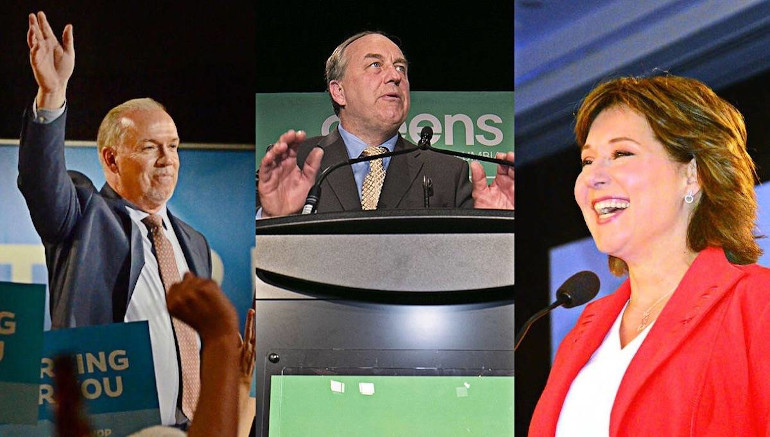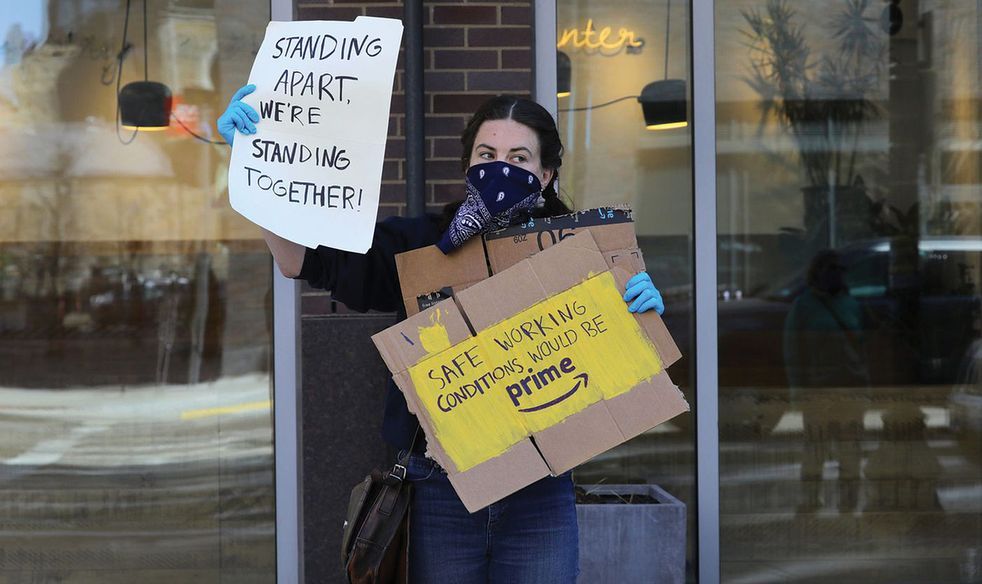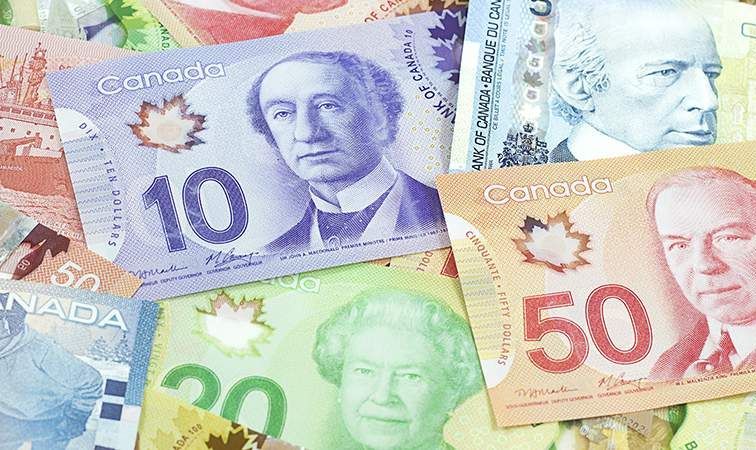Written by Socialist Alternative members in Vancouver.
After the British Columbia (BC) provincial election, no one yet knows who won or who will form the next government. At present, the out-going Liberals have 43 seats, one short of a majority, while the opposition New Democrats (NDP) have 41 and the Greens have three seats. In one seat, the NDP has a majority of only 9 votes.
There are over 176,000 absentee votes – people who voted outside of their own constituency, which will not be counted until May 26. In addition, there could be several recounts. Even after all this, there still might not be a party with a majority. There could be protracted negotiations between the parties about who will form the government. It is certain that any government will be unstable with only a wafer thin majority.
|
2013 election |
2017 Election |
Change
2013 – 2017 |
|
% of votes |
Seats |
% of votes |
Seats |
% of votes |
Seats |
| Liberal |
44 |
49 |
41 |
43 |
– 3 |
– 6 |
| New Democrats |
40 |
34 |
40 |
41 |
0 |
+ 7 |
| Greens |
8 |
1 |
17 |
3 |
+ 8 |
+2 |
| Other (1 Independent and mainly Conservatives |
7 |
1 |
2 |
0 |
– 5 |
– 1 |
|
99 |
85 |
100 |
87 |
|
|
Notes:
- 2 New seats in Surrey and Richmond (both Liberal)
- 2013: ‘Other’ includes an elected independent (0.6% of total votes) and Conservatives won nearly 5%
Sixteen Years of Liberal Government
The BC Liberals, really a conservative party, have been in power since 2001. They have presided over the worst inequality in Canada, one of the highest levels of poverty – one in five children are in poverty, and a low minimum wage. Basic welfare has been frozen at $610 a month for ten years.
Public services have been undermined. The BC Teachers’ Federation had to go to the Supreme Court of Canada to reverse the Liberal government’s education cuts. Post-secondary funding has had real per-student cuts of more than 20% since 2001. BC students graduate with the highest debt in Canada, averaging over $35,000. The childcare system is broken, being condemned multiple times by the BC Representative for Children and Youth.
The reason BC is so unequal and has had so many cuts to services is because the government gave tax cuts worth $3 billion every year to the rich and corporations. The richest 1% of BC’s population receives an annual gift from the government of nearly $40,000. BC has the most regressive tax system in Canada as indirect taxes have soared including being the only province in Canada to collect Medical Premiums (MSP). The richest 1% in BC pay a lower effective tax rate on average, 11.2%, than the poorest 90%, 11.9%.
The Liberal’s environment record is a disaster. They support the Kinder Morgan tar sand pipeline to Vancouver. They propose to build a $9 billion dam on the Peace River, flooding farmland that could feed a million people, to produce electricity that is not needed. The Liberals have pushed ahead trying to expand fracked natural gas exports. In Metro Vancouver, they are happy to spend on highway bridges and construction, while starving transit of funds.
The Liberals are good friends of big business and the rich with large tax cuts, weak laws protecting workers and mega-construction projects. In turn big business are good friends of the Liberals, their ‘donations’ to party funds are simply a good investment. The New York Times described BC as “The ‘Wild West’ of Canadian Political Cash,” as there are virtually no rules on contributions to political parties. The Liberals raised $119 million mostly from large contributions including from two large property developers, the Redekops and Walls, who gave $700,000 between them in 2016. The RCMP is now investigating donations to the Liberals and they have returned nearly $250,000 in illegal contributions. This is only the latest of a series of government corruption scandals.
How is it possible that the Liberals were not soundly defeated in the election? They campaign on a claim of providing jobs and tax cuts. BC has seen modest job growth in the last few years, although this is mainly in Metro Vancouver. They have actually increased the taxes paid by low- and middle-income people. Another cautious NDP election campaign aided the Liberals.
The New Democrats
The NDP, a party with social democratic roots, had some positive points in their platform. These included: a $15 an hour minimum wage, $10 a day child care, abolishing MSP fees and trying to stop the Kinder Morgan pipeline. They proposed a review of Site C dam and oppossed a new $3.5 billion bridge, the latest part of the Liberals’ $10 billion highway spending in Metro Vancouver.
The NDP can never out spend the Liberals or get as sympathetic media coverage, they have to win the ground campaign, which requires energetic and mobilized supporters. The NDP did not run an inspiring campaign like those of Sanders in the US or
Mélenchon in France. They waited until near the election to come out with their key proposals and had not enthused their potential supporters in the year before the election.
Crucially, they did not propose to reverse the $3 billion annual tax gift to the rich and big business. They proposed to take back just $500 million, one sixth of this robbery of the public purse. This limited their ability to propose many needed improvements to public services.
The Greens
The Green Party made the biggest gains in the election, more that doubling their votes to 17% and increasing their number of seats from one to three. They presented themselves as different, neither left nor right. However, their platform and speeches reveals a modest environmental program, not much different from the NDP, combined with pro-business approach.
They proposed lots of subsides for companies and instead of policies, a host of Task Forces. The Greens’ Leader, Weaver, stated “In terms of the economic plan, our position is much closer to the Liberals than the NDP … [the NDP] plan is to have government retrofit its buildings with union workers … that doesn’t incentivize industry. You need to send a signal to the market and let the innovation and creativity happen there in the market.”
One of their most worrying proposals was not to increase the minimum wage, instead establish a commission to investigate. Their answer to poverty is a Basic Income. As they don’t propose a good minimum wage or strong progressive taxation, this would mean better paid workers subsidizing lousy employers, a great way to divide workers. The Greens seem to believe they can produce a caring capitalism
.
The Election Results
Voter turnout only increased by 3% to 60%, demonstrating the failure to the NDP to generate widespread enthusiasm. The Liberals picked up votes from the sharp drop in support for the Conservative Party and independents, while losing votes to the NDP in Metro Vancouver and the Greens on Vancouver Island. Overall, their share of the vote dropped 3%. The Greens picked up votes everywhere.
The NDP gained votes from the Liberals in Metro Vancouver, winning ten seats, and now dominate the conurbation. However, they lost votes to the Greens on Vancouver Island and, scandalously, to the Liberals in the interior of BC. Their share of the vote remained the same as the last election at 40%. This was lower than the 42% they gained in the 2009 election.
The election produced a major re-alignment of party support. The Liberals have been reduced to only 15 of the 40 seats in Metro Vancouver, mainly in the more affluent suburbs. They have no seats in the second main urban area of Greater Victoria. However, in the more resourced based interior of BC the NDP’s support has sharply fallen. In 2005 and 2009 it held eight seats, dropping to six in 2013 and now only four.
The NDP’s failure to increase its share of the votes and the loss of support in the interior is why the Liberals may yet cling to power. In Metro Vancouver, a major reason for the Liberals decline is the high cost of housing and childcare.
Metro Vancouver has lower unemployment than the interior, based on the property bubble and in the low-paid service sector. People think they can get a job, even if the pay is low paid and not enough to make the rent or pay for childcare.
The worst unemployment in BC is the interior and even in towns and communities where resource extraction is not the main source of employment, it is often the reason the town exists or it is central to community’s identity. The Liberals’ rhetoric about jobs resonated in the interior, although the reality is that they have overseen declining employment.
In the past, the strong union regions of the interior were solid NDP territory; this is weakening in large part due to the weakness of the party’s policies on jobs. Resource extraction, and processing where it exists, is dominated by the private sector. Without either a strong tax base or a willingness to at least direct the private sector, the NDP has little power to deliver jobs. The NDP needs a jobs strategy for the interior of BC, which would include ending the export of raw logs and developing a wood-processing industry, developing extensive renewable energy, insulating and upgrading buildings and homes, and expanding food production and processing rather than flooding the Peace River valley.
Looking Ahead
The Liberals may pick up enough votes in the final count to win another seat giving them a majority of one. Or there may be a period of negotiations to put together a coalition or agreement, with the Greens supporting one of the other parties. Amazingly, Weaver, the Greens’ leader, seems more inclined to support the Liberals in spite of their terrible environmental record. The Liberals’ platform has less in common with the Greens than the NDP. This would provoke anger among many Green supporters.
Some in the NDP are claiming that coming so close to victory is a success. In reality, failing to defeat the Liberals after 16 years and not even increasing their share of the vote is a sign of the party’s campaign weakness. In some constituencies, there were more energetic campaigns but overall the provincial campaign was cautious. As the new government will be weak, it is likely the next election will be in a year or two. The NDP cannot simply wait for the Liberals to collapse; they need to be bolder and more inspiring. Otherwise the Liberals could recover and win.
The NDP will also seek to blame the Greens for their failure to win, but of the three Green seats two were traditionally Liberal and one was NDP. The NDP’s losses and failure to regain seats in the interior was not due to the Greens.
Unless the NDP manages to form a coalition after all the recounts, Alberta is the only province with an NDP government. In this election, in a very unusual move, the Alberta NDP refused to give support because of disagreement over the Kinder Morgan pipeline.
Trudeau has been courting the Alberta NDP and this will increase. He is committed to the pipeline and welcomed the Liberals being the largest party. In the height of hypocrisy he stated about the floods in Québec, “We’re going to have to understand that bracing for a 100-year storm is maybe going to happen every 10 years now, or every few years” because of climate change yet he is working to increase climate change by pushing ahead with pipelines.
Complacency about the BC results may flow into the federal NDP, reinforcing the trend to avoid the much-needed shift from the failed policy of cautious, modest uninspiring campaigns that end in defeat. The opportunities for a strong campaigning party are growing in Canada, but it is unclear whether the NDP will seize them.
The hard work of campaigns including opposing Kinder Morgan and Site C, and demanding action to tackle poverty and for affordable childcare had a major impact on the election results especially in Metro Vancouver. Whatever government emerges from the election will be weak. Now is the time for the campaigns to step up the pressure.
.



